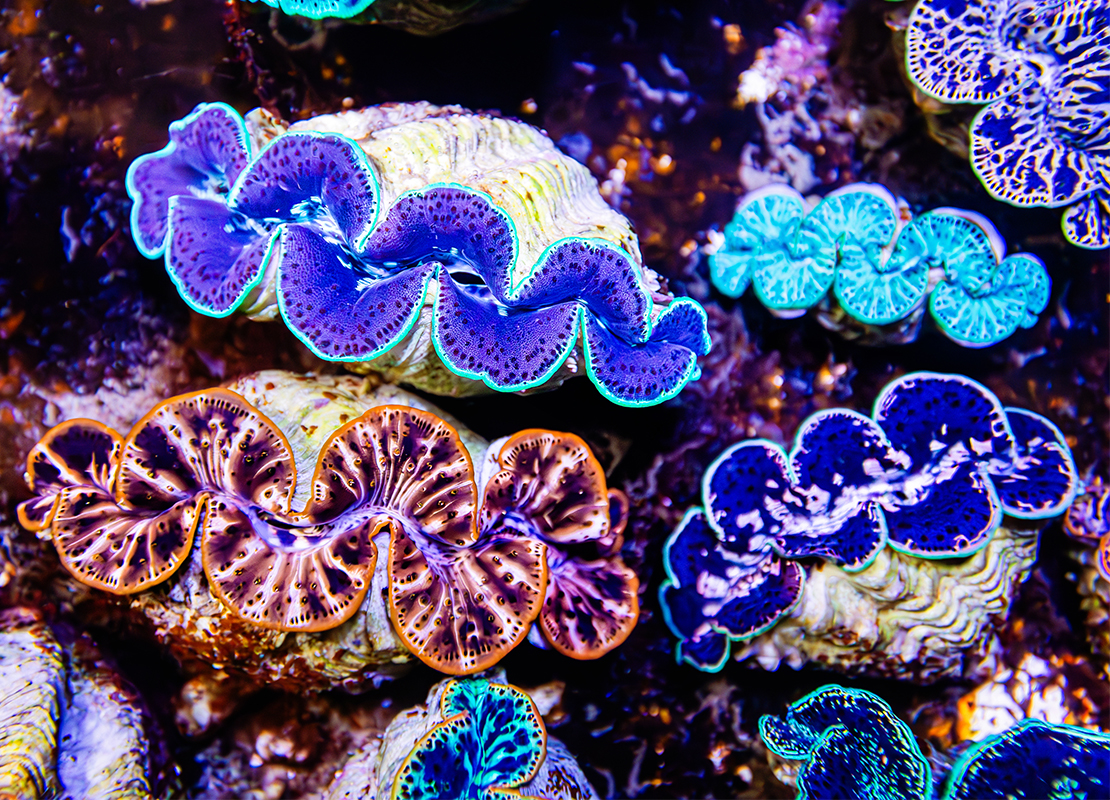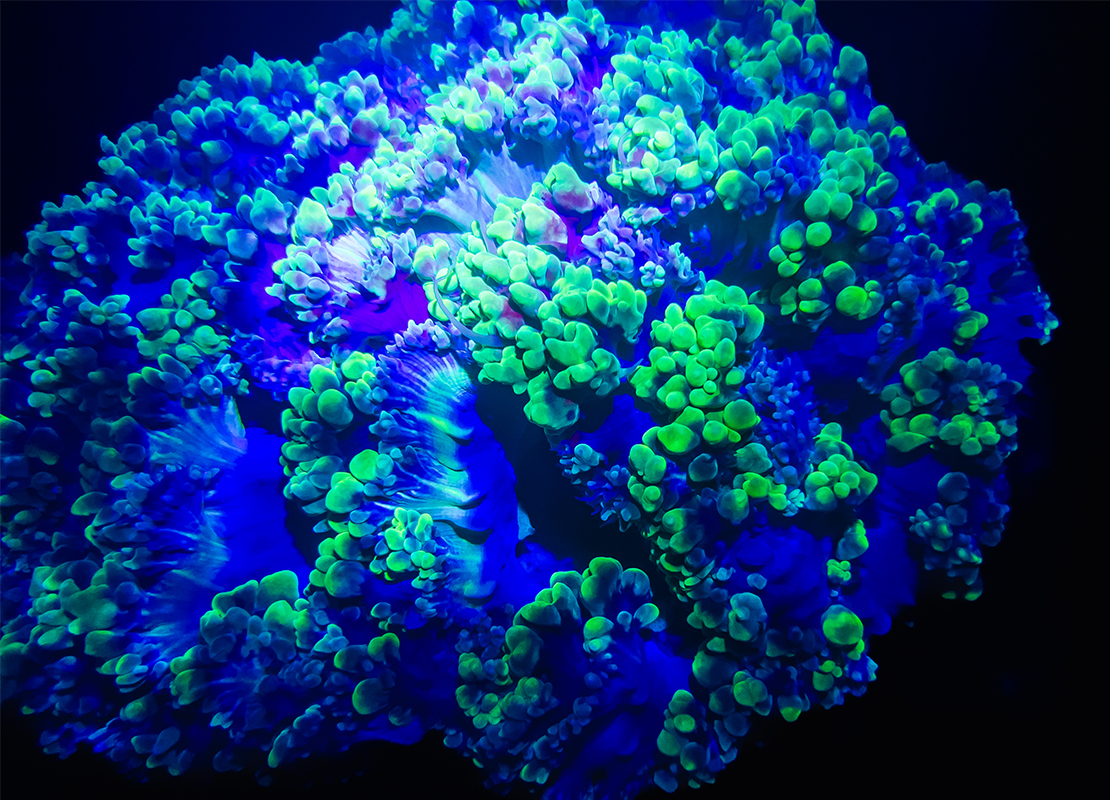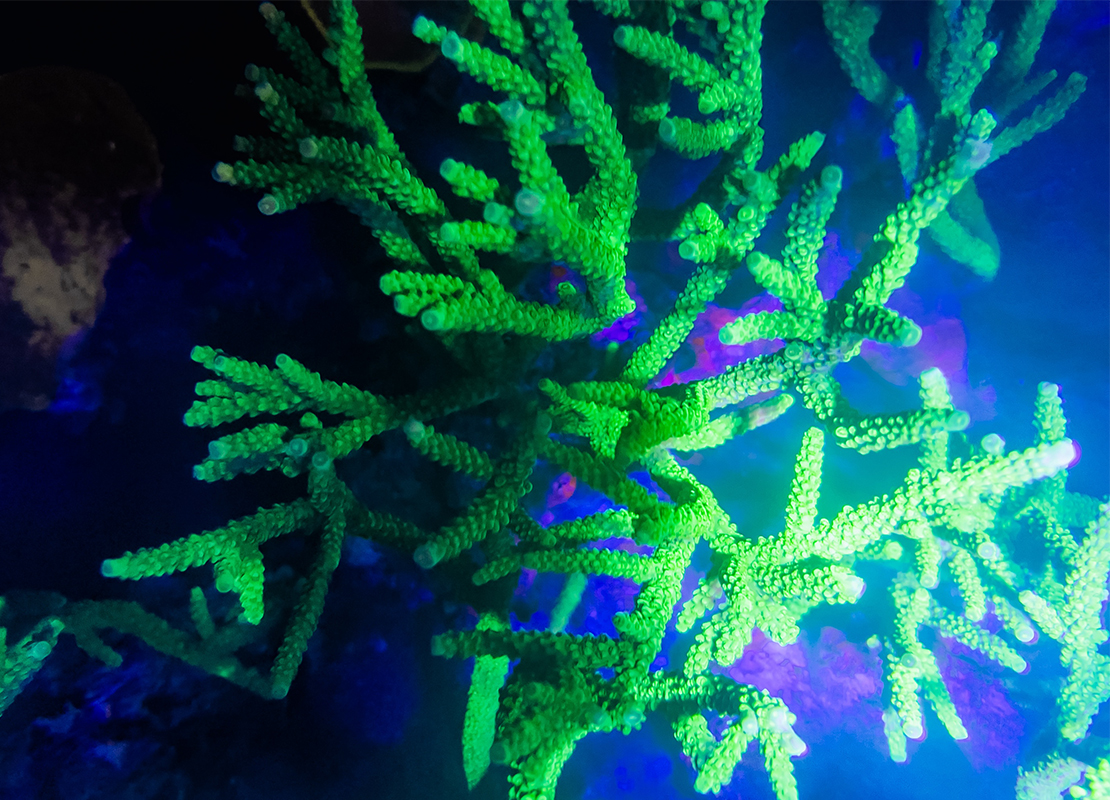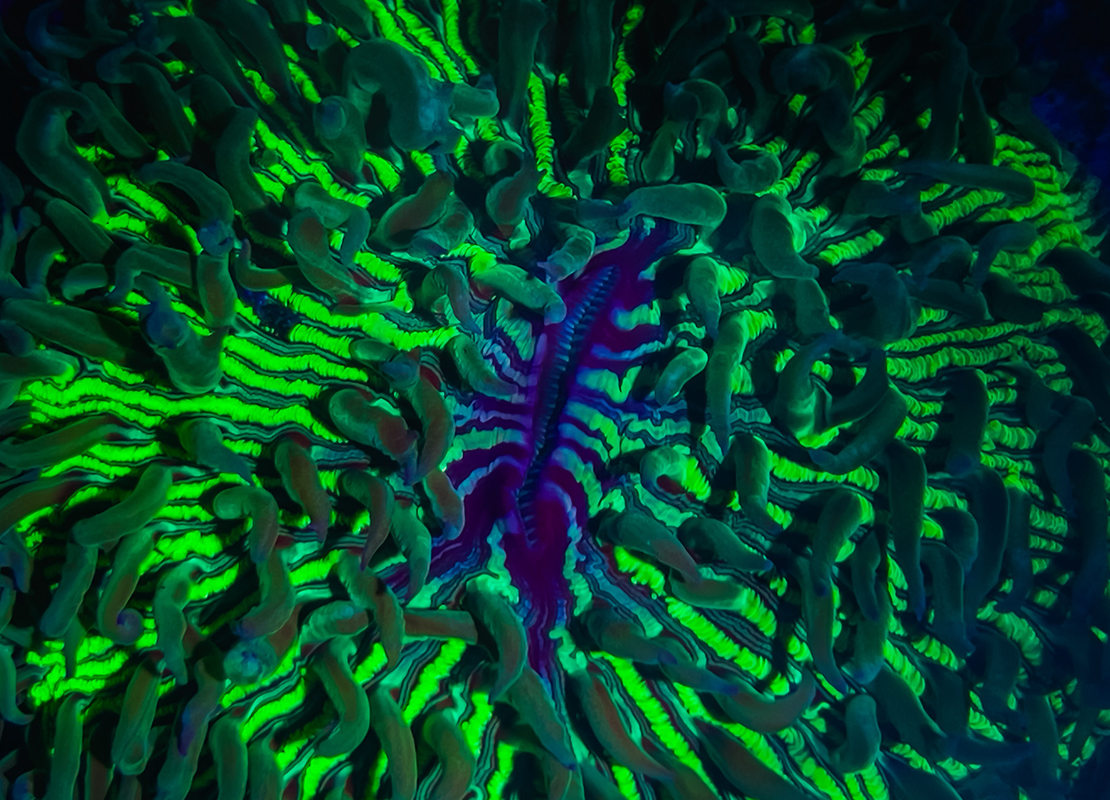Please note, Coral Classroom was a temporary space during Living Seas construction. These corals can now be found in the Tropical Coral habitat located in Living Seas.
Welcome to Coral Classroom!
For years, coral has been an integral part of the story and legacy of Birch Aquarium at Scripps Institution of Oceanography at UC San Diego. While Living Seas is under construction, many of the aquarium’s corals have found a temporary home in one of the classrooms, giving guests an extraordinary, close-up view of these vibrant creatures. In Coral Classroom you'll see coral up close, discover what makes it unique and learn more about the aquarium’s coral conservation efforts.
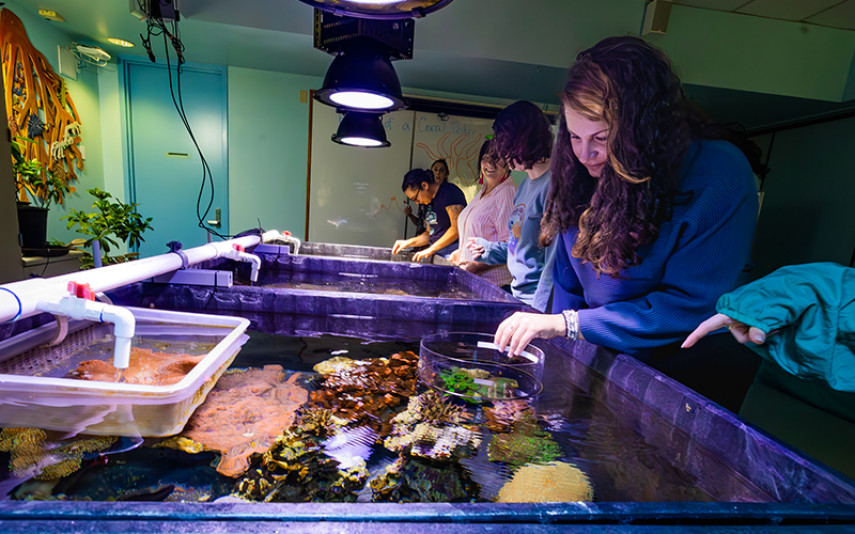
Over Thirty, Flirty and Still Thriving
Believe it or not, some of the corals in Birch Aquarium’s collection are over thirty years old! The Bubble Coral and Tongue Corals have been with the aquarium since 1988 and are among some of the oldest known corals in aquarium care. These corals were donated to the aquarium by US Fish and Wildlife.
It’s easy to see how these corals got their names! Bubble Coral is made up of small round polyps and tissue that resemble bubbles. Meanwhile, Tongue Coral gets its name from its long, flat shape which bears a resemblance to a tongue.
A Celebrity Coral
In 1997, the aquarium received a tiny 3-inch fragment of Bali Green Slimer coral. From that single fragment, it’s since grown into multiple large colonies! Over the years, the aquarium has shared hundreds of coral fragments with Scripps researchers and accredited aquariums within the United States. This exchange enhances the collective understanding of coral and helps reduce pressures on wild populations. This particular coral has also been featured in about 15 research papers, making it a true celebrity among corals.
Gaze at Giant Clams
Giant Clams are the underwater kaleidoscopes of the marine world! Their dazzling display of blues, greens and purples results from natural pigments as well as microalgae, called zooxanthellae, that live inside them. This relationship is beneficial to both beings – the clams get nutrients from the zooxanthellae and in exchange, the clams provide a safe home.
The largest clam in our collection measures over 20 inches — about the size of a tote bag! When it snaps its shells shut, it can unleash a powerful jet of water, sometimes splashing aquarists and even the occasional guest!
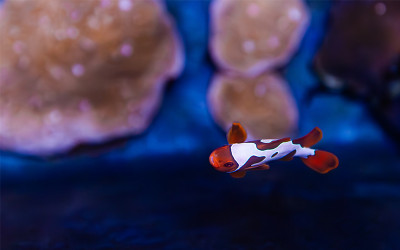
With Friends Like These Who Needs Anemones?
Spinecheek Anemonefish live in sea anemones which provide them with protection from predators. In return, this fish removes algae and other debris from their anemone homes and ward off potential predators of sea anemones. Sounds like a pretty good deal!
One of the Spinecheek Anemonefish swimming among the Giant Clams holds a special place at the aquarium. This fish was hatched here in 1997, and is older than many of the aquarium’s employees!
See Coral in a Whole New Light
Certain corals can glow or “fluoresce” in the dark thanks to a special fluorescent protein! However, the reasons behind this incredible phenomenon can vary by species. Corals can utilize fluorescence as a natural “sunscreen” to protect themselves from harmful UV rays, glow to attract potential prey or even use fluorescence to enhance photosynthesis!
Interested in seeing this phenomenon for yourself? Join us for Oceans at Night, our once-a-month 21+ event, where you can witness corals glow with stunning biofluorescence under ultraviolet light in the Living Light Experience.
About Birch Aquarium at Scripps






